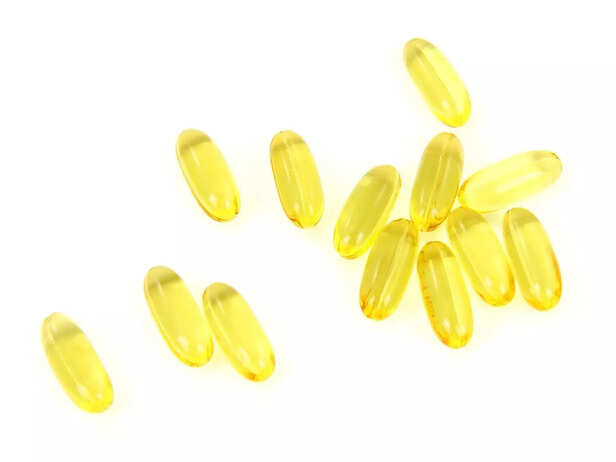What Ingredients Should Be Avoided in Dog Products ?
Kashish Pandey | Sep 30, 2025, 10:35 IST
labrador
( Image credit : Pixabay )
Many dog owners trust that all pet products on the market are safe, but the truth is that not every ingredient benefits your furry companion. Some additives can irritate the skin, upset digestion, or even lead to long-term health problems. Understanding which substances are harmful ensures your pet receives care that truly supports their well-being. From grooming shampoos to everyday food and treats, knowing what to avoid is just as important as knowing what to include.
Dogs depend on their owners to make the right choices for their health and safety. While many pet brands promise quality and care, not all live up to that image. Some ingredients commonly found in dog food, treats, and grooming supplies may pose risks that pet parents don’t notice immediately. Artificial flavors, harsh chemicals, and preservatives often sneak into products under complicated names. Over time, these can cause skin irritation, digestive trouble, or worse, chronic illness. Being informed about what goes into your dog’s body and onto their skin is the first step toward keeping them safe. Let’s break down which ingredients every owner should avoid in dog products.
Chemicals like BHA, BHT, and ethoxyquin are often added to extend shelf life. While effective for manufacturers, these substances have been linked to allergies, skin irritation, and even potential cancer risks in animals. Choosing natural preservatives like vitamin E (mixed tocopherols) is always safer.
Brightly colored kibbles or treats may look appealing to humans, but dogs don’t need artificial dyes. Ingredients like Red 40, Yellow 5, and Blue 2 have no nutritional benefit and may trigger hyperactivity or allergic responses. Similarly, synthetic flavorings mask low-quality ingredients instead of providing true nutritional value.
Used in some dog foods to keep texture moist, propylene glycol can harm a dog’s red blood cells and cause toxicity over time. Though banned in cat food, it still shows up in certain dog products, making it one to avoid entirely.
Low-quality pet foods often include animal by-products such as beaks, hooves, or feathers. These offer minimal nutrition and may carry contaminants. Rendered fats not only reduce food quality but can also introduce toxins and bacteria if poorly processed.
These preservatives are found in processed meats and can also sneak into dog treats. When consumed regularly, they increase the risk of cancer and damage red blood cells, making them unsafe for long-term use.
Commonly used as a thickener in canned dog food, carrageenan may cause digestive inflammation. Research suggests it can irritate the stomach lining and contribute to gastrointestinal issues.
Shampoos and conditioners sometimes contain parabens as preservatives. Over time, they may interfere with hormones and contribute to skin irritation or allergic reactions. Always opt for paraben-free grooming supplies.
Many grooming sprays, shampoos, and even plastic toys contain phthalates and sulfates. Phthalates disrupt hormones, while sulfates strip natural oils, leading to dry, itchy skin. Both can reduce your dog’s comfort and long-term health.
This sugar substitute, found in sugar-free gums, candies, and even some dog dental chews, is extremely toxic to dogs. Even small amounts can cause severe hypoglycemia, liver damage, or even death. Always check labels carefully.
Some treats contain unnecessary amounts of salt and sugar. While small traces are acceptable, high levels can contribute to obesity, kidney issues, and high blood pressure in dogs.

 Pet products often use scientific or confusing terms on labels, making it difficult for owners to identify harmful ingredients. Reading ingredient lists carefully, cross-checking unknown names, and trusting only reputable brands reduces the risk of exposing your dog to toxins.
Pet products often use scientific or confusing terms on labels, making it difficult for owners to identify harmful ingredients. Reading ingredient lists carefully, cross-checking unknown names, and trusting only reputable brands reduces the risk of exposing your dog to toxins.
The love for a pet is shown through daily choices, especially when it comes to food, treats, and grooming care. Knowing what ingredients to avoid protects dogs from harmful side effects and ensures a longer, healthier life. By eliminating toxic preservatives, artificial additives, and harsh chemicals, owners can create a safer environment for their pets. A cautious approach to labels and brand claims empowers you to give your furry friend the healthiest care possible.
Discover expert advice and the latest tips on pet care, training, health, and more. Stay updated with all things pets at Times Pets!
Harmful Ingredients in Dog Products
1. Artificial Preservatives
2. Artificial Colors and Flavors
3. Propylene Glycol
4. Rendered Fat and By-Products
5. Sodium Nitrite and Nitrates
6. Carrageenan
7. Parabens in Grooming Products
8. Phthalates and Sulfates
9. Xylitol
10. Excessive Salt and Sugar
Safer Alternatives

capsule
( Image credit : Pixabay )
- Look for natural preservatives like vitamin E or vitamin C.
- Choose whole protein sources such as chicken, lamb, or fish instead of by-products.
- Opt for grain-free or limited ingredient diets if your dog has allergies.
- Use organic, chemical-free grooming products to protect your dog’s skin.
- Always check labels for xylitol, dyes, or sulfates before purchasing.
Why Labels Matter

medications
( Image credit : Pixabay )
The love for a pet is shown through daily choices, especially when it comes to food, treats, and grooming care. Knowing what ingredients to avoid protects dogs from harmful side effects and ensures a longer, healthier life. By eliminating toxic preservatives, artificial additives, and harsh chemicals, owners can create a safer environment for their pets. A cautious approach to labels and brand claims empowers you to give your furry friend the healthiest care possible.
Discover expert advice and the latest tips on pet care, training, health, and more. Stay updated with all things pets at Times Pets!
